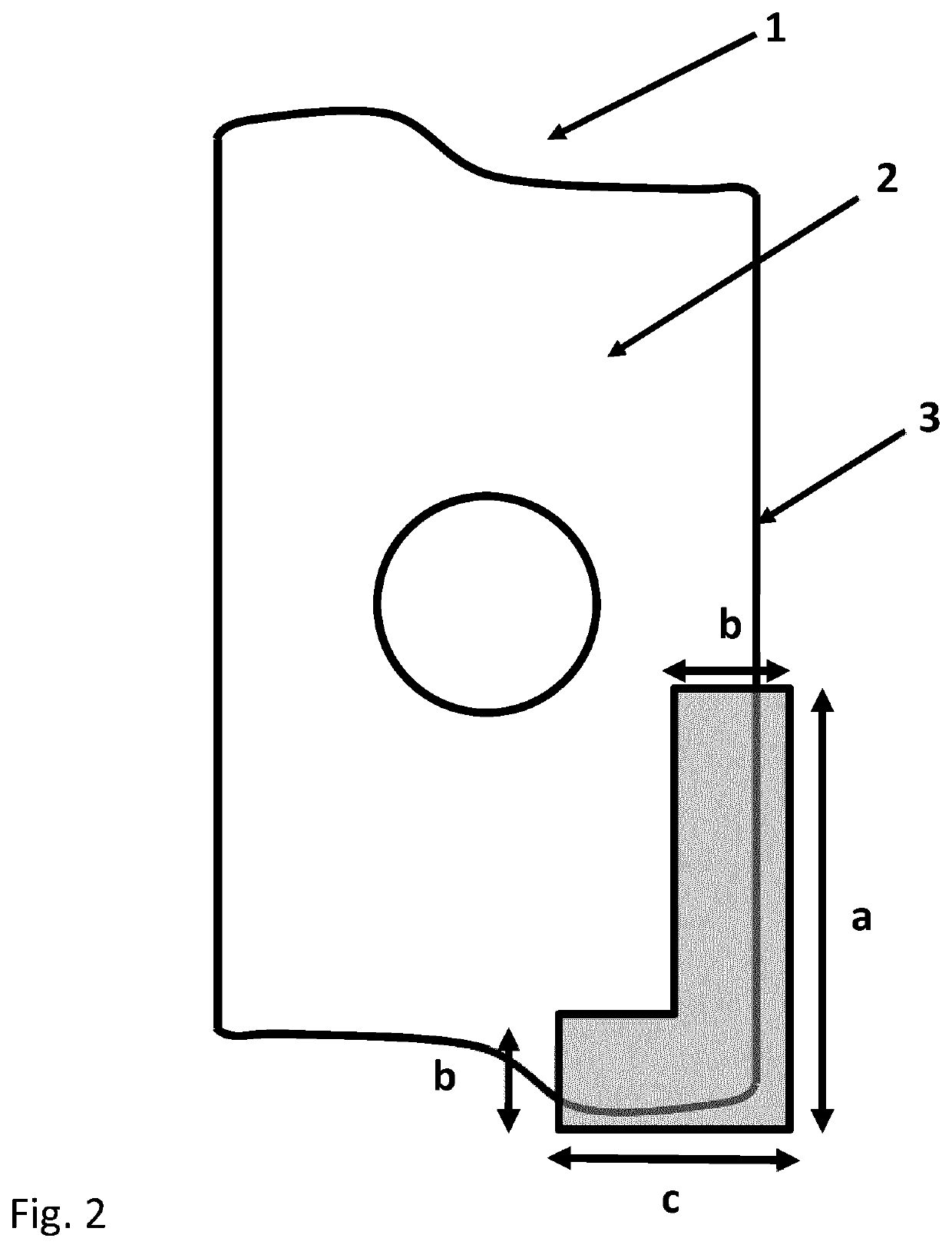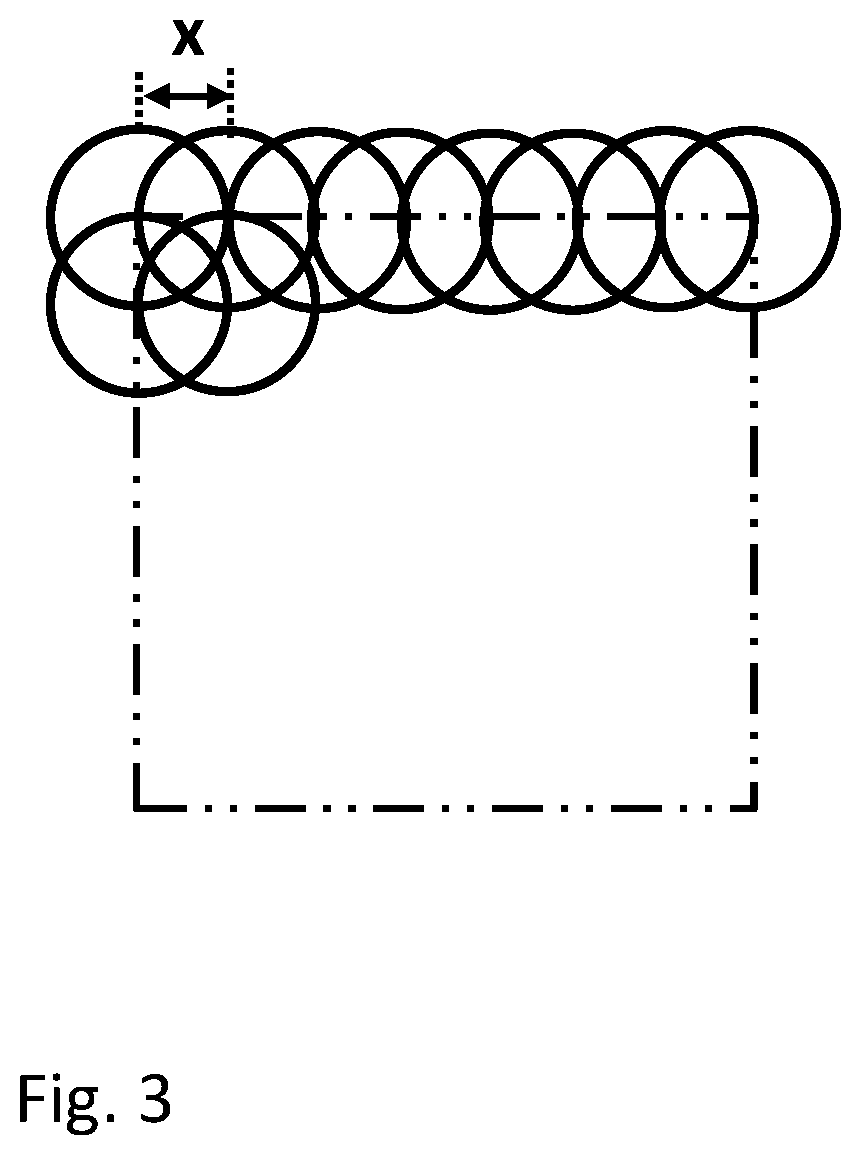Method of treating a coated cutting tool
a cutting tool and coating technology, applied in the direction of superimposed coating process, manufacturing tools, coatings, etc., can solve the problems of reducing the risk of reducing the stress in the surface area and the reducing the edge line chipping resistan
- Summary
- Abstract
- Description
- Claims
- Application Information
AI Technical Summary
Benefits of technology
Problems solved by technology
Method used
Image
Examples
Embodiment Construction
[0042]Exemplifying embodiments of the present invention will now be disclosed in more detail and compared to comparative embodiments. Coated cutting tools (inserts) were prepared, analyzed and evaluated in cutting tests.
Substrate
[0043]Cemented carbide substrates of ISO-type R390-11T308M-PM for milling were manufactured, see FIG. 1.
[0044]Two different cemented carbide compositions were manufactured. Substrate A was manufactured from a powder mixture with a composition of about 13.50 wt % Co, 0.57 wt % Cr and balance WC. Substrate B was manufactured from a powder mixture with a composition of about 9.14 wt % Co, 1.15 wt % Ta, 0.27 wt % Nb, 0.05 wt % Ti and balance WC. The powder mixtures was milled, dried, pressed into green bodies and sintered at 1450° C. to form sintered cemented carbide substrates.
[0045]CVD coatings were deposited on the two cemented carbide compositions. The CVD coating was composed of an inner TiN layer of 0.5 μm in thickness, a subsequent wear resistant T...
PUM
| Property | Measurement | Unit |
|---|---|---|
| wave length | aaaaa | aaaaa |
| thickness | aaaaa | aaaaa |
| total thickness | aaaaa | aaaaa |
Abstract
Description
Claims
Application Information
 Login to View More
Login to View More - R&D
- Intellectual Property
- Life Sciences
- Materials
- Tech Scout
- Unparalleled Data Quality
- Higher Quality Content
- 60% Fewer Hallucinations
Browse by: Latest US Patents, China's latest patents, Technical Efficacy Thesaurus, Application Domain, Technology Topic, Popular Technical Reports.
© 2025 PatSnap. All rights reserved.Legal|Privacy policy|Modern Slavery Act Transparency Statement|Sitemap|About US| Contact US: help@patsnap.com



